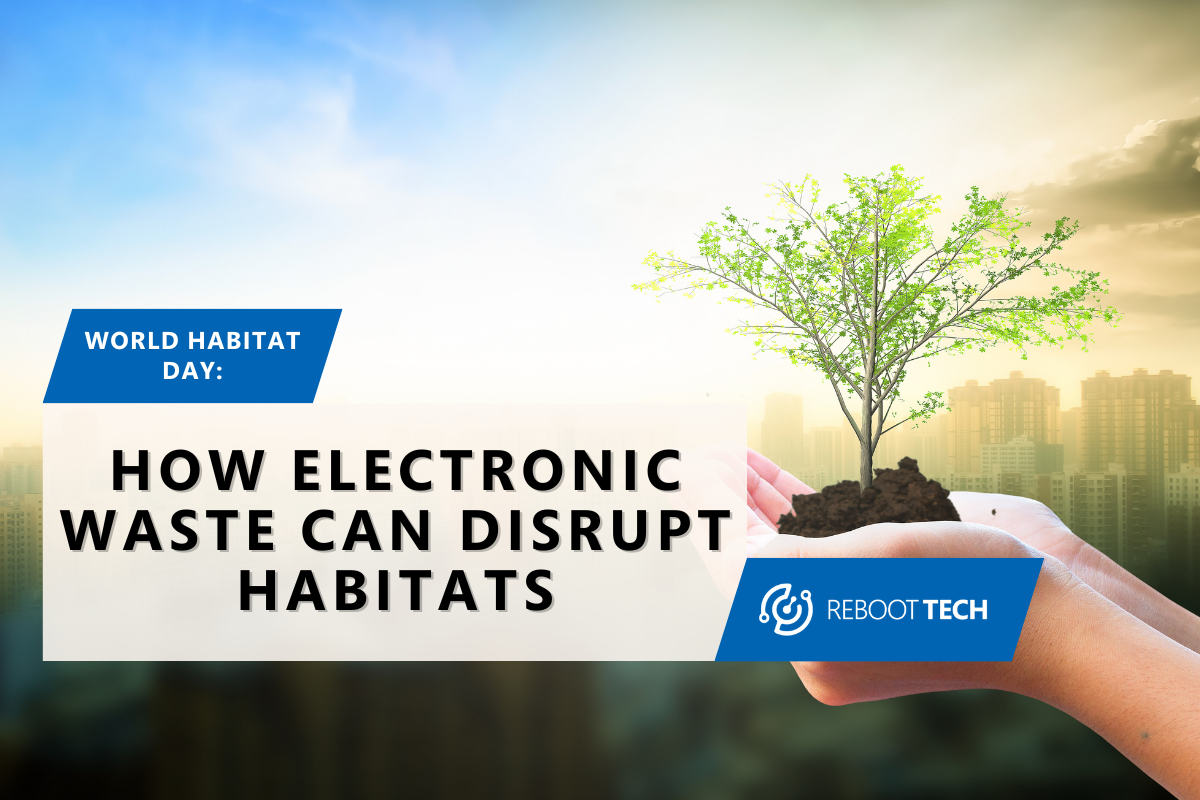
How Electronic Waste Can Destroy Habitats
Every year, the first Monday of October marks World Habitat Day, a global event created to remind us of our collective responsibility to care for the world’s habitats. It’s a day that calls for reflection on the state of our environment, emphasizing the need for adequate shelter and sustainable urban development.
But one growing threat to habitats that we don’t often think about is e-waste. Our old electronics—whether discarded phones, computers, or appliances—may seem harmless, but the improper disposal of these devices can have a devastating effect on ecosystems across the planet.
In this article, we’ll explore the connection between e-waste and habitat destruction, how improperly discarded electronics can indirectly harm plants and animals, and the broader implications of this for global ecosystems. We’ll also touch on the importance of World Habitat Day and what you can do to reduce e-waste and protect the planet’s habitats.
What is World Habitat Day?
World Habitat Day was designated by the United Nations in 1985 to reflect on the state of human habitats and the right of all to adequate shelter. Celebrated annually on the first Monday of October, it serves as a global reminder that we have both the power and the responsibility to shape the future of our cities, towns, and natural environments. The event focuses on creating sustainable urban spaces that work in harmony with nature, while also highlighting issues such as homelessness and inadequate housing.
Each year, World Habitat Day has a unique theme aimed at raising awareness about critical global issues. Since its inception in 1986, themes have ranged from “Shelter for the Homeless” to “Cities and Climate Change”. The day also celebrates the UN-Habitat Scroll of Honour Award, which recognizes individuals and institutions that make outstanding contributions to improving human settlements and the quality of life in urban areas.

As the global population grows, so does the pressure on natural environments and urban areas. World Habitat Day reminds us of the fragility of ecosystems, especially when it comes to the increasing problem of e-waste and its impact on our habitats.
How E-Waste Indirectly Harms Habitats
When we think about threats to natural habitats, the first things that come to mind are typically deforestation, pollution, or climate change. However, e-waste is an often overlooked contributor to habitat destruction. E-waste refers to discarded electronic devices such as smartphones, laptops, televisions, and household appliances. When improperly disposed of, these electronics can release hazardous chemicals into the environment, indirectly harming ecosystems and wildlife.
Many electronic devices contain toxic substances like lead, mercury, cadmium, and arsenic. When these devices end up in landfills, they break down over time, releasing harmful toxins into the soil and waterways.
These toxins can leach into rivers, lakes, and oceans, contaminating water sources that animals and plants rely on to survive. In addition, these chemicals disrupt food chains, poison wildlife, and degrade the natural environment, making it difficult for ecosystems to thrive.
Habitat Destruction: Implications and Causes
Habitat destruction is one of the most significant threats to species worldwide. According to data, 88.3% of species are impacted by habitat destruction, making it the leading cause of species decline. In comparison, other major threats like overexploitation, invasive species, pollution, and climate change have a lower direct impact, though they often compound the effects of habitat loss.
Habitat destruction can be defined as the elimination or alteration of the conditions that plants and animals need to survive. This destruction occurs for many reasons—deforestation, urbanization, agriculture, mining, and industrial expansion.

But the effect of pollution, including e-waste pollution, is often overlooked. When electronics are improperly disposed of, the hazardous chemicals they release alter the natural balance of habitats, often rendering them uninhabitable for many species.
Take forests, for example. Forests are home to over 80% of the world’s terrestrial species, yet they are being cleared at an alarming rate. 15 billion trees are cut down annually, and as tree density decreases, so does the planet’s ability to absorb carbon dioxide, worsening climate change.
What You Can Do on World Habitat Day to Combat E-Waste
On World Habitat Day, one of the most impactful things you can do to help protect the planet’s habitats is to make a commitment to responsibly disposing of your electronics. Here are a few actionable steps you can take:
- Recycle Your E-Waste: Find local e-waste recycling facilities or companies like Reboot Tech that specialize in responsible electronic disposal. Certified e-waste recyclers ensure that your electronics are dismantled and recycled in an eco-friendly manner, keeping harmful chemicals out of the environment.
- Donate or Repurpose Old Devices: If your electronics are still functional, consider donating them to schools, non-profits, or community organizations that could benefit from them. Extending the life of your electronics keeps them out of landfills for longer.
- Buy Refurbished Electronics: Instead of always purchasing brand-new devices, consider buying refurbished electronics. This reduces the demand for new products and cuts down on the overall e-waste produced.
- Work with a Certified E-Waste Recycling Company: Search “E-Waste Recycling Center near me” and find the best one with the necessary certifications. To learn more about those, click here. It’s important to work with professionals, especially if you have a lot of electronics to recycle with sensitive information.
Celebrating World Habitat Day
As we observe World Habitat Day, it’s essential to recognize the broad range of threats that face our natural environments, and e-waste is one that too often flies under the radar. The toxic chemicals that leak from improperly disposed of electronics contribute to the destruction of habitats around the globe—whether through soil contamination, water pollution, or the degradation of marine ecosystems.
By taking action—whether through responsible e-waste disposal, donating old electronics, or supporting recycling initiatives—we can all contribute to the protection of the world’s habitats. With the increasing impact of habitat destruction on species, taking small steps to reduce e-waste can have a big effect on the health of the planet’s ecosystems.
This World Habitat Day, let’s all take a moment to consider how our electronic habits affect the world around us, and what we can do to make a positive change. Together, we have the power to protect the habitats that are essential for both wildlife and human survival.






